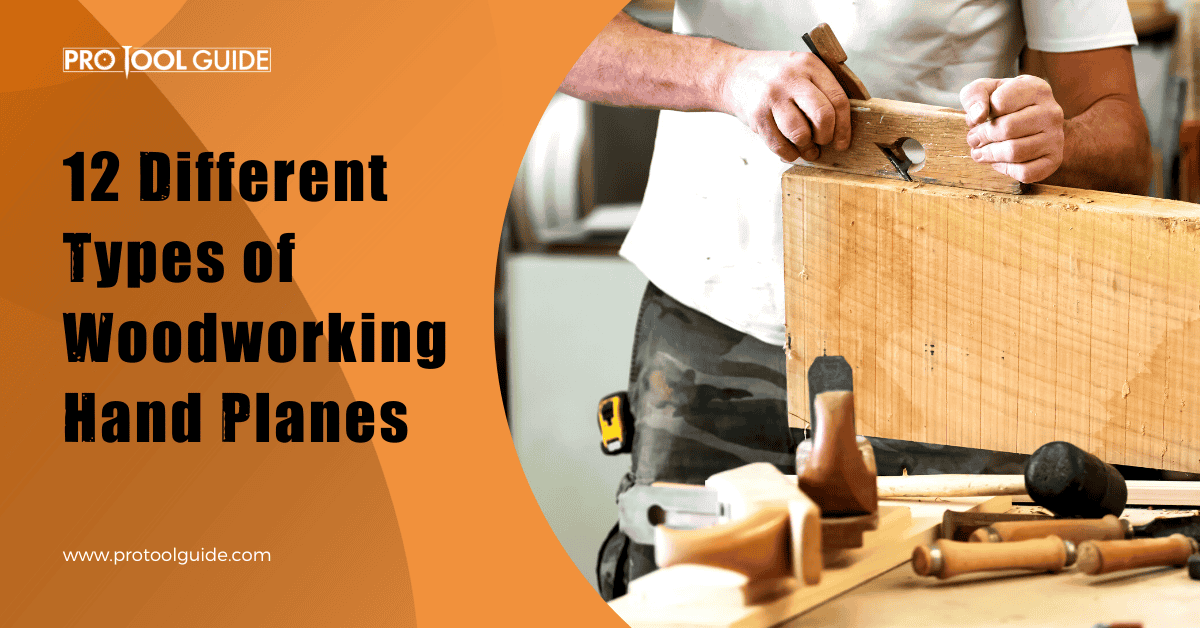Hand planes are as ancient as it goes when it comes to woodworking tools. The number of hand planes available has steadily decreased over the years as more reliable and faster tools replace them.
However, hand planes are still relevant as several types still grace woodworking tables.
The portable tool has remained relevant for so long, showing its reliability. Even though more sophisticated tools can do the work of a hand plane, its simplicity ensures it is not going out of use soon.
This traditional tool works with none of those fancy arrangements. There are so many types of these hand planers, as new woodworkers like to call them.
Here is a guide that discusses types of wood plane and their features. This piece also shows extra information on buying the right-hand plane.
What is a Hand Plane?

A hand plane is a traditional woodworking tool that shapes and smoothens wooden surfaces.
It uses power from the hands to force the blade to remove parts of the wood as clippings. The tool is simple to use, helping woodworkers to handle small tasks.
How Does a Hand Plane Work?
The hand plane comprises a handle known as the tote, a knob, a chip breaker, a shoe, a sharp cutting blade, and a level cap, among other smaller parts.
One thing hand planes have going for them is their simplicity which has continued to keep them relevant. It doesn’t take a lot of processes to see them smoothen and shape wood surfaces.
All the parts of a hand plane work together to shape wooden surfaces. When a woodworker holds the tote and knob with two hands and pushes the hand plane forward, the sharp iron blade shaves off part of the wood surface.
The amount of shavings and style depends on the set angle and type of hand planer.
When to Use a Hand Plane?
Hand planes may seem old school, but they become highly effective for small tasks and when working on smaller surfaces.
For example, the hand plane can shave off parts of the edge of a table, smoothen rough chair handles, reduce tight door frames, and much more.
The hand planes help to smoothen rough surfaces, size large wooden parts, and prepare lumber, among other things.
Types of Hand Planes
With so many hand plane types available, it can be overwhelming for most people to go over them, which is why a guide like this exists.
This guide shows some of the more popular types of hand planes. Here we will not discuss different hand plane models but types of hand planes based on their uses or classification.
1. Bench Plane
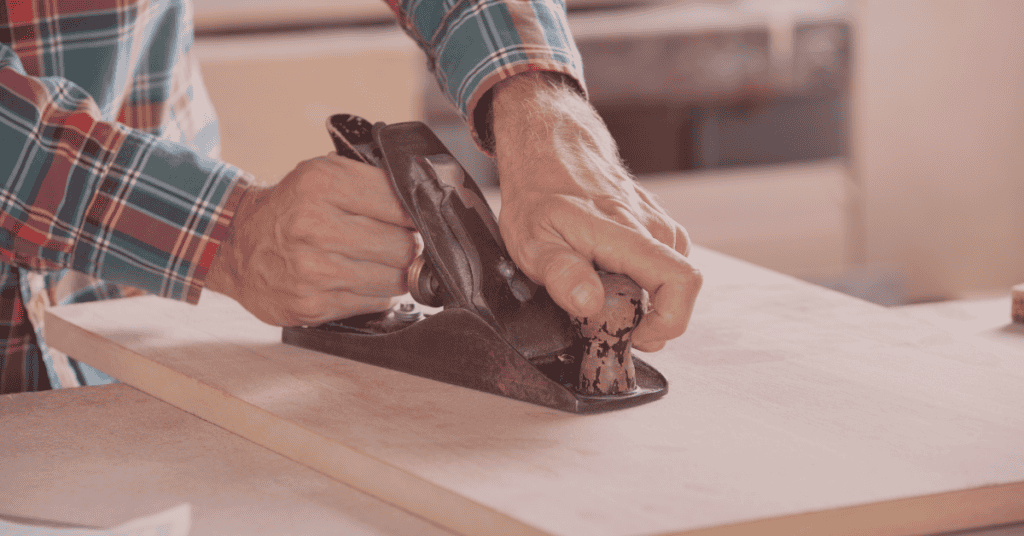
Bench planes are some of the most common but hard-to-use hand planes. As the name implies, it works on benches and represents a category, not a single-hand plane.
Several other types of wood can fall into this category as bench planes. Bench Plane comprises jointer planes, smoothing planes, jack planes, and more. Bench planes will usually range between 5 and 24 inches in size.
2. Block Plane
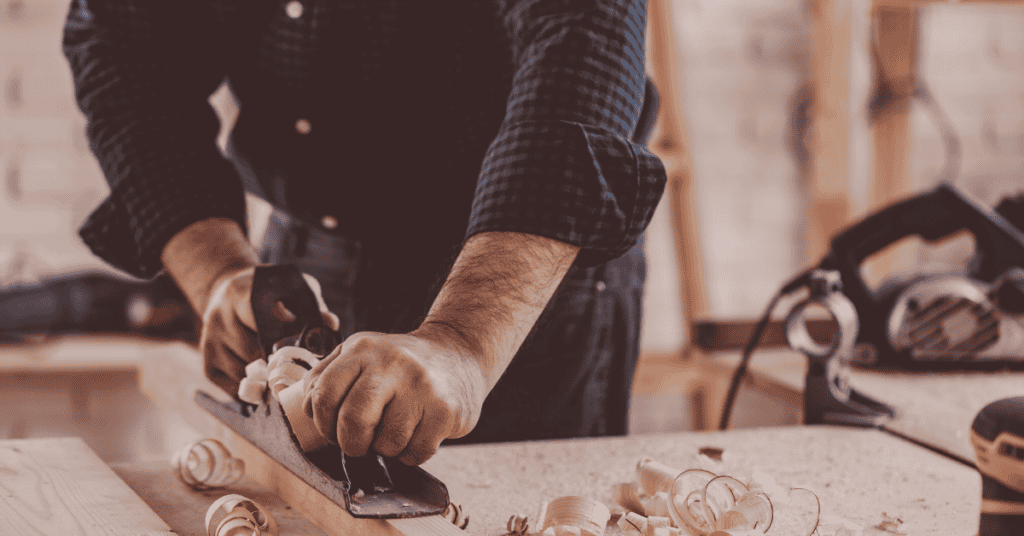
Block planes are small hand planes with 3 to 7 inches. Their small size means they work in a small area at a time and shave off only a tiny portion of the wood.
Block planes are effective when dealing with specific woodworking activities since they can be as precise as possible, considering their size. In addition, the bevel-up blade on block planes ensures you can get extreme angles.
Block planes remove end grain and clean surfaces of wood that have been used previously.
They are more affordable, so most beginners start with block planes. Their size also means woodworkers can use the block plane with one hand.
These planes are pretty similar to smoothing planes. First is the standard block plane with a 20° pitch angle and a low-angle 12° pitch.
3. Bull Nose Plane

The bull nose plane is shaped like a bull’s nose, hence the name. It is another short-hand plane measuring 3 to 4.5 inches with a thin body.
It is like the shoulder plane, but represents a shorter version. The bull nose plane works on tenons and other activities where precision is required.
The blade of the bull nose plane is more comprehensive than its thin body, preventing it from getting stuck against the rabbet walls. In addition, some bullnose planes offer removable fronts so the blade can work as a chisel in tight corners.
4. Router Plane
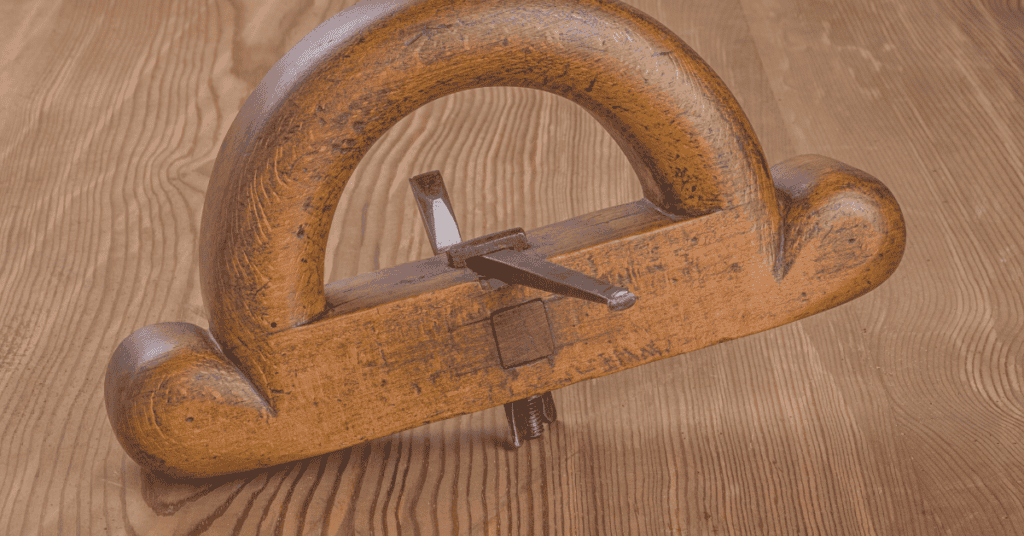
The router plane features two knobs, an extended centerpiece, and sometimes a fence to act as a guide.
You can set the blade in two cutting positions. In the first position, the blade is within the body and ideal for open boards; in the second position, the blade is outside the body and is effective when cutting corners.
The router plane is ideal when shaving off shallow mortises and grooves.
5. Chisel Plane
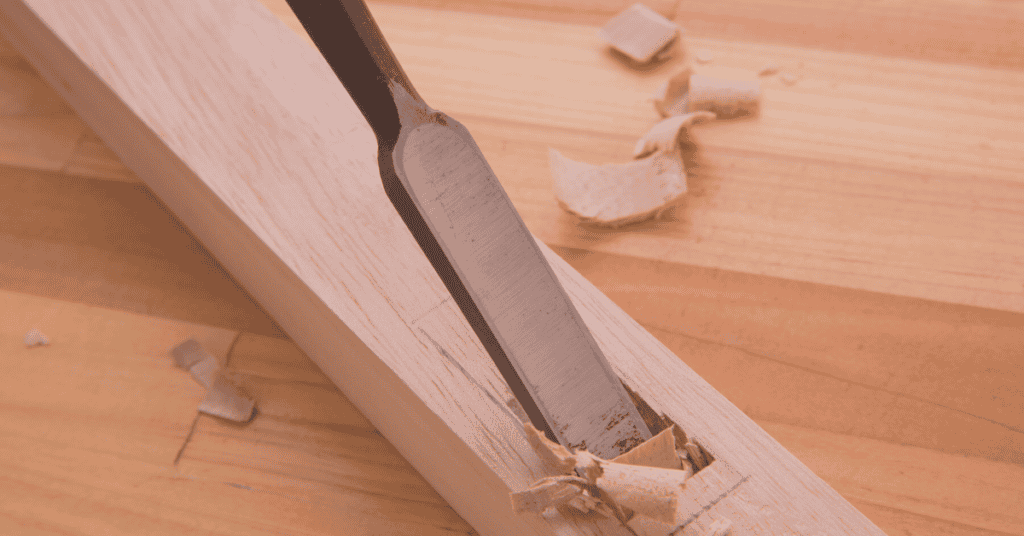
Simple and easy to use are some of the best ways to describe this hand plane. It lacks a front guard, exposing the blade and allowing it to work like a chisel, albeit more effectively.
The handle and body ensure it is comfortable to use, and the cutting angle is constant. The above features set it apart from the chisel.
6. Scrub Plane
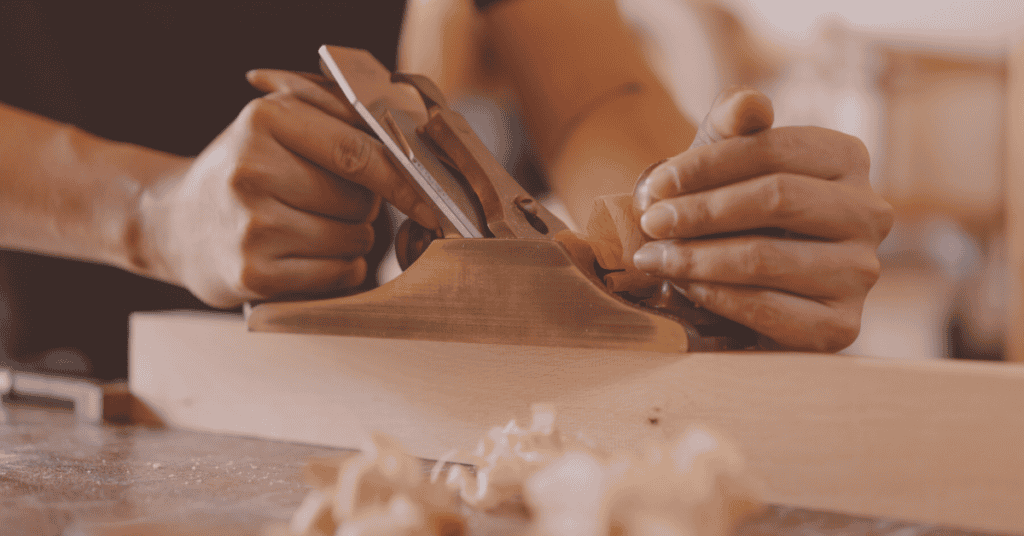
Scrub planes and short and thin hand planes are known for their fast working system. They can quickly reduce the size of the wood with their thick and durable blade.
However, its blade makes deep cuts that can sometimes create gouges. The scrub plane is aggressive and fast but hardly leaves a smooth surface. It is ideal when reducing sizes rather than when smoothing a surface.
7. Smoothing Plane
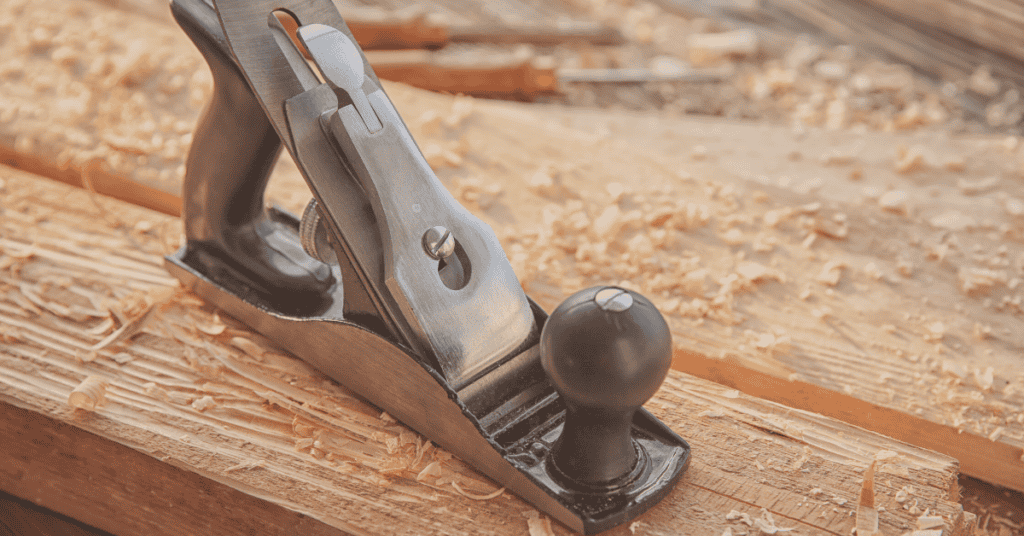
While we can consider the plane above working at the earliest stages of wood preparation, smoothing planes come into use at the end, right before finishing.
They are less aggressive and more graceful, shaving off thin layers simultaneously. The smoothing plane evens out minor rough corners or surfaces. It can produce similar results as sandpaper.
The body is short at only 7 to 10 inches, which is ideal for covering a small portion of the wood at a time.
The hand plane corrects small surface unevenness, not to make wholesome changes. However, the hand plane is practical where extra smoothness is required.
Also Read: Awesome Round Picnic Table Plans
8. Jack Plane
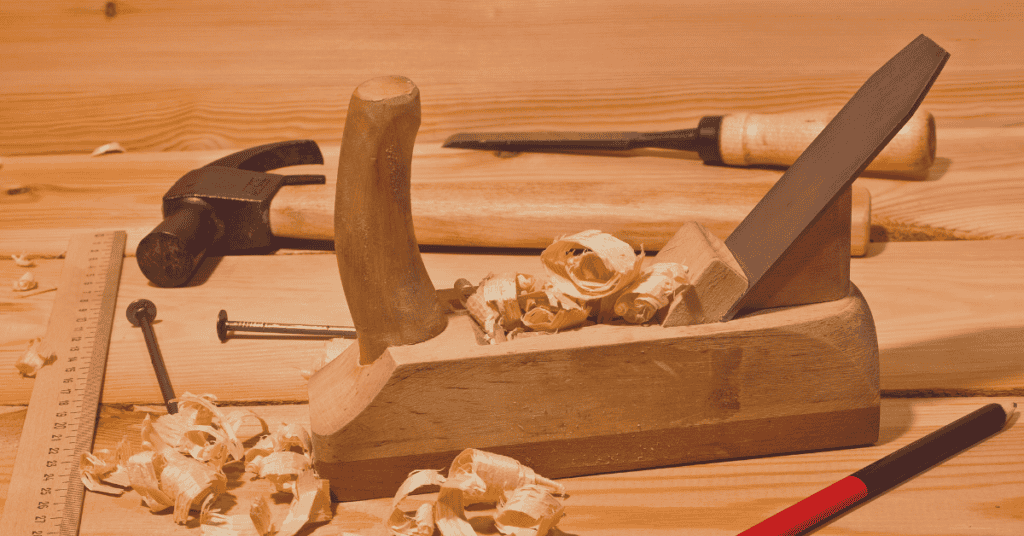
The Jack plane is a versatile hand plane that can handle much different wood shaping and smoothing tasks. Its size is one of the driving forces behind its versatility since it is set at the not too big nor too small range.
As a result, the jack plane is an essential hand plane, especially for less experienced users.
The jack plane’s slightly curved blade helps it remove more wood at a faster plane than most. It also leaves a smoother surface than some more popular options like the jointer plane.
The length of the jack plane ranges from 12 to 18 inches.
9. Jointer Plane

Jointer planes are the most extended planes, with lengths between 22 and 30 inches. Jointing shapes and board edges to get square and straight parts for gluing or attaching to other surfaces. A jointer plane straightens curved surfaces caused by warping.
10. Traditional Japanese Plane
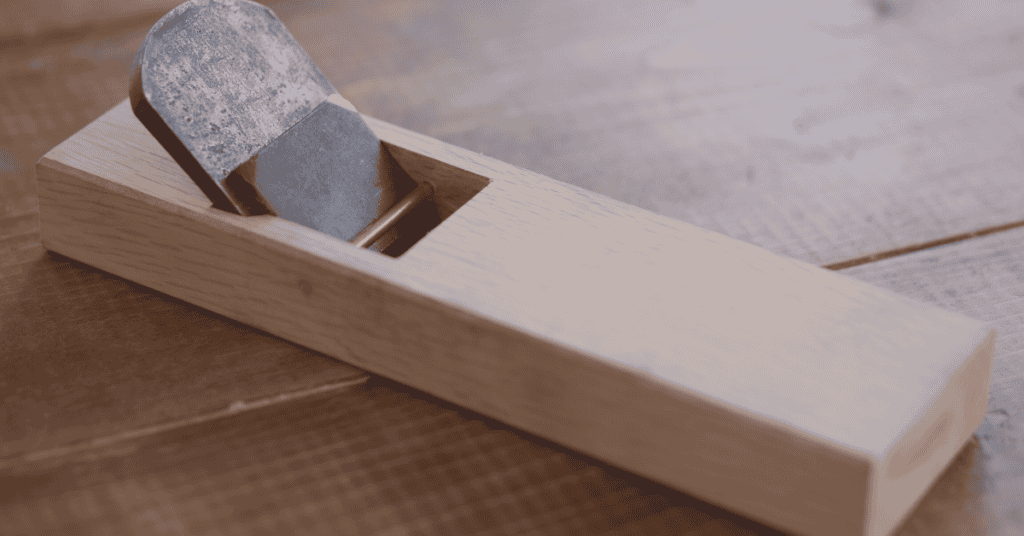
Japanese planes can rival many other European planes in simplicity and effectiveness. However, a noteworthy difference between a Japanese plane and others is that it works with a pull motion rather than a push.
Using the hand plane may take some getting used to, but once you get the hang of it, it just feels like any other hand plane.
The Japanese plane usually comprises a single wooden material apart from the blade and other small iron parts. This singular material gives it a distinct, simple look.
The blade of the Japanese plane is closer to the heel, with the front end free for the dominant hand. Japanese planes offer more specialized uses, which may mean owning more planes to accomplish different tasks.
11. Fore Planes

Fore Planes are fast hand planes that can slightly smoothen surfaces. It ranges between 14 and 20 inches long, with the length of the sole making it challenging to work on the highs and lows of uneven surfaces.
Perfect when looking for a smooth surface without fine details.
12. Plow Plane
Similar to the rabbet or router plane, the blade sticks out of the body. The exposed blades help it work on corners more effectively.
Plow planes are ideal for grooves and dadoes. The adjustable fence on the plow plane helps it make parallel cuts.
Read More About: Reciprocating Saw vs Jigsaw: Which One to Choose?
Hand Plane Buying Guide
With the different hand planes available, buying a hand plane with no guide can be pretty challenging.
However, the buying process can become more accessible and more enjoyable with the correct information. Here are some features to consider before buying that hand plane:
1. Material of The Body
Typically, hand plane bodies come in two forms; metal and wooden bodies. The metal body is more durable and resistant to wear. However, it is heavier. Its weight can easily cause stress when working for long.
Wooden hand plane bodies, on the other hand, are lighter and allow the user to work for longer without getting tired.
However, they are less durable. The type of wood the hand plane would be working on and the time the user will spend determines which material is better.
2. Blade Angles
The angle of the blade can determine how much wood and the type of wood it can shape.
Low-angle blades like that in block planes will shave off thinner layers than high-angled planes.
High-angled planes are more suited to scraping lumbers.
3. Type of Frog
The frog is the part of the hand plane that supports the blade. The two major types of frogs are the bailey and bedrock.
The two frog types sport different characteristics. The style and fit of the frog affect the blade’s effectiveness.
FAQ’s
Here are some common questions about hand planes and their answers:
Moisture can easily cause rust and soak wooden parts. Keeping it with the blade down is best to prevent any accidents. Store hand planes away from harsh weather and in dry places.
Their first wood hand plane can be of utmost significance to beginners. Of course, buying a first-hand plane depends on the intended uses. However, the jack plane is an excellent option as it serves both large and smaller tasks.
Summary
Getting the right-hand plane has never been easier with more information and guidance. Despite popular beliefs, you will need more than a single hand plane for your woodworking activities.
Several Types of wood plane are available, and you can make your own decision.
Luckily, most hand planes are affordable, which allows users to keep a collection of different types in their workshops.

